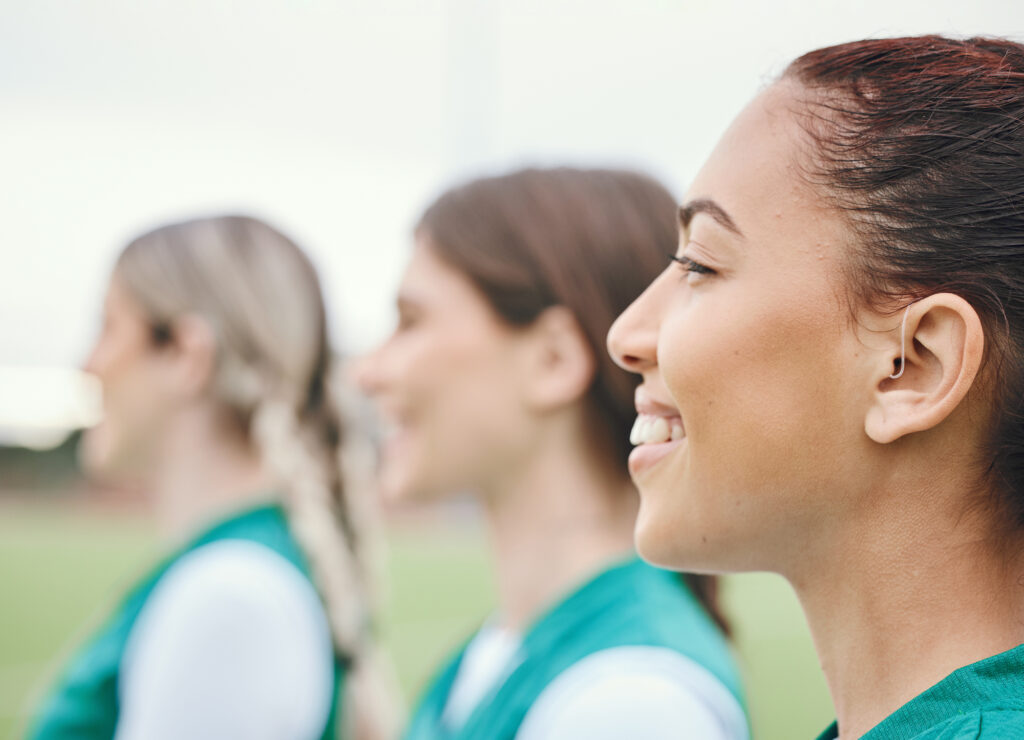
Choosing the best orthodontic treatment for you can be tricky enough, but athletes often have additional considerations to keep in mind. Physical activity, especially in contact or high-intensity sports, can increase the potential risks of dental injuries. Add to that hectic practice and game schedules, and choosing between braces and aligners as an athlete can be a real challenge.
Both treatment options have their advantages and potential drawbacks. If you’re an athlete or the parent of one, we are here to help you understand the differences between the two and explore which might be the better fit.
Orthodontic Treatment for Athletes
Regardless of the mechanism, orthodontic treatment works by gradually moving your teeth into their proper positioning. While both braces and aligners are effective at doing this, they differ significantly in both design and approach.
Like most things, there is no single easy answer for which is better for athletes. Instead, you will need to consider how their orthodontic treatment will affect your lifestyle, weigh the pros and cons, and decide what your priorities are in order to choose which treatment is best.
Of course, your orthodontist will listen to your thoughts and consider your specific case in order to recommend a treatment. Here are some of the pros and cons of braces and aligners that you may want to discuss with your orthodontist.
Braces for Athletes
Braces consist of brackets that are attached to the surface of your teeth and connected by wires and elastics. Adjustments are made regularly by your orthodontist to apply pressure and encourage teeth movement over time.
Pros:
Durability
Traditional braces are fixed in place, meaning there’s no risk of forgetting to use them or misplacing them in the locker room. Since braces remain on your teeth throughout treatment, braces consistently provide steady progress.
Suitable for Complex Cases
Braces are also extremely effective. They have been the go-to treatment for mild to severe misalignment, overcrowding, and bite issues for generations.
Protection
Many athletes wear mouthguards during physical activity to protect their teeth. Fortunately, special orthodontic mouthguards are available to fit over braces, offering both protection and comfort.
Cons:
Potential for Mouth Injuries
One of the main concerns for athletes with braces is the risk of injury. A hit to the face during a game or practice could cause brackets or wires to damage the inside of the mouth, leading to cuts or irritation. Similarly, while braces are quite durable, it is possible to break wires or dislodge brackets.
Challenging Mouthguard Fit
While mouthguards are essential for safety, they can feel bulky when worn over braces. This can make finding a properly fitting orthodontic mouthguard a bit more challenging.
Aligners for Athletes
Aligners are custom-made, removable trays designed to fit snugly over your teeth. Made from clear, plastic materials, aligners are an almost invisible alternative to braces. Patients receive a series of trays throughout their treatment, with each new set driving subtle changes in teeth positioning.
Pros:
Removable
Aligners can be temporarily removed during high-contact sports, giving athletes the flexibility to prioritize safety and comfort without interfering with their orthodontic treatment. Since aligners are removable, there’s no concern about wires or brackets causing mouth irritation or injuries during sports.
No Risk of Mouth Injuries from Hardware
Even if they are left in, aligners are smooth and lack the metal components of braces, meaning they are less likely to contribute to injuries directly. However, aligners are not mouthguards.
Easy Mouthguard Fit
Because aligners are removable, you do not need a special mouthguard to fit over them. Instead, any typical sports mouthguard you would normally choose can be used.
Cons:
Responsibility to Wear Them Consistently
Aligners need to be worn for at least 20-22 hours a day to be effective. For athletes with busy schedules, keeping track of the trays and using them consistently can occasionally be a challenge.
Potential for Misplacement
Since aligners are removable, there’s always a chance they could get lost if taken out for a game or practice.
Not For Severe Cases
While clear aligners are very effective at correcting mild to moderate misalignment issues, they are not always the best option for all individuals, particularly those with more difficult orthodontic issues.
Which Orthodontic Treatment is Best for You?
The right choice between braces and aligners depends largely on an athlete’s individual needs, level of physical activity, and priorities.
If you’re considering braces or aligners and need guidance, we’re here to help. Schedule a consultation today, and we’ll work with you to choose a treatment plan that fits your active lifestyle.





